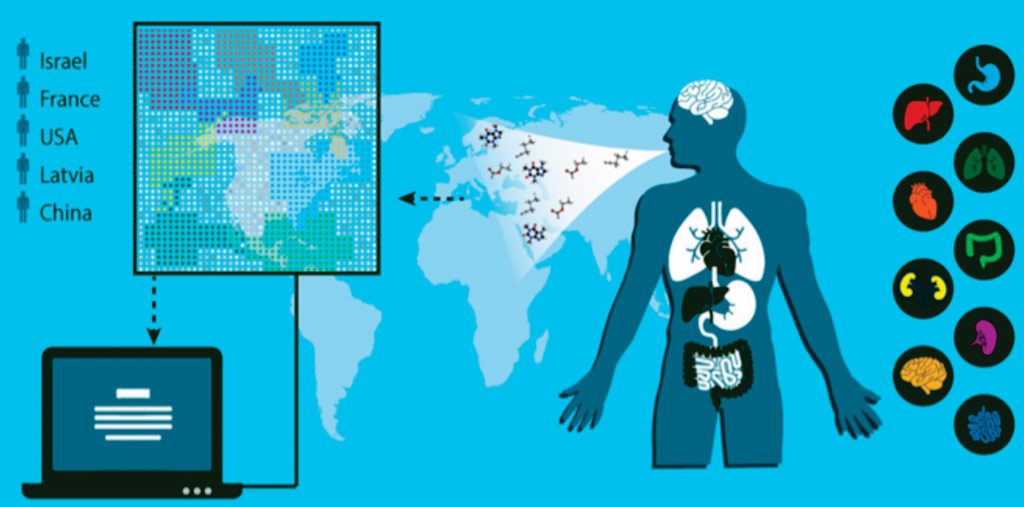Nanoarray Senses and Distinguishes Multiple Diseases
By LabMedica International staff writers
Posted on 12 Jan 2017
Exhaled breath contains nitrogen, carbon dioxide and oxygen, as well as a small amount of more than 100 other volatile chemical components and the relative amounts of these substances vary depending on the state of a person's health.Posted on 12 Jan 2017
An artificially intelligent nanoarray based on molecularly modified gold nanoparticles and a random network of single-walled carbon nanotubes for noninvasive diagnosis and classification of a number of diseases from exhaled breath has been developed.

Image: A diagram of the artificially intelligent nanoarray system to diagnose different diseases from breath analysis (Photo courtesy of the Technion).
An international team of scientists led by those at the Technion−Israel Institute of Technology, collected breath samples between January 2011 and June 2014 from 14 departments in nine clinical centers worldwide and were subjected to meta-analysis. The team developed an array of nanoscale sensors to detect the individual components in thousands of breath samples from patients who were either healthy or had one of 17 different diseases, such as kidney cancer or Parkinson's disease.
To transfer exhaled volatile organic compounds (VOCs) the samples underwent thermal desorption (at 250 °C) in a TD20 auto sampler thermal desorption system before they were temporarily stored in a stainless steel VICI sample loop at 150 °C. One of the two breath samples from each subject was analyzed using gas chromatography–mass spectrometry (GC-MS) to determine the chemical nature and composition of the exhaled breath. For this analysis, the Shimadzu GCMS-QP2010 was used combined with their thermal desorption system.
The performance of this artificially intelligent nanoarray was clinically assessed on breath samples collected from 1,404 subjects having one of 17 different disease conditions included in the study or having no evidence of any disease (healthy controls). Blind experiments showed that 86% accuracy could be achieved with the artificially intelligent nanoarray, allowing both detection and discrimination between the different disease conditions examined. Analysis of the artificially intelligent nanoarray also showed that each disease has its own unique breathprint, and that the presence of one disease would not screen out others.
The diagnosis and classification power of the nanoarray was also validated by an independent analytical technique, gas chromatography linked with mass spectrometry. This analysis found that 13 exhaled chemical species are associated with certain diseases, and the composition of this assembly of volatile organic compounds differs from one disease to another. The study was published on December 21, 2016, in the journal ACS Nano.













